You can see them in DIY stores, between high shelves in wholesale markets, and in the warehouses of large logistics companies or in the food industry: reach trucks. Their main task in the warehouse is replenishment. They are designed to maneuver in confined spaces while storing and retrieving large loads well over ten meters high in the racks. This is made possible by their compact design. Unlike with front-loaders, the operator of a reach truck sits at right angles to the direction of travel. Thanks to the compact design with a reach mast, the vehicle can even maneuver in aisles that are no more than three meters wide.
One task of the reach truck, for example, is to transfer pallets from an upper shelf level to a lower one. Once at the rack location, the driver extends the mast upwards and moves the forks along the load arms to the required pallet. In order to be able to load and unload the pallet quickly and safely, the forks can also be tilted backwards and forwards and moved sideways. In order to work quickly and safely, the driver ideally has the load in view without having to devote more attention than necessary to operating the reach truck.
Operating without repositioning
Improving the ergonomics of the trucks is therefore an ongoing development aim at Linde Material Handling (MH). The goal was to do just that for the reach trucks of the Linde R10 to R25 series, with a new control unit for controlling the mast functions. The goods handling specialist brought Porsche Engineering on board as a partner for the design of the new multifunctional lever (MFL). “We wanted to develop an operating concept that combines all hydraulic functions in one lever,” says Fabian Scherer, who works for Linde MH as the product manager for reach trucks.
Previously, there were two or four individual levers, depending on which operating concept the operator preferred. “Even if the operator is familiar with the levers, they still have to change hand positions again and again when loading,” explains Scherer. This takes time and may require the operator to briefly shift his gaze from the load to the levers. This is precisely what the new MFL was designed to change. The idea behind it is that all travel, push and lift functions can be controlled intuitively with little physical effort required from the wrist and fingers and it is no longer necessary to raise and lower one’s hand. This enables intuitive operation and increases productivity.
Alternatives to single lever control already existed on the market. They functioned like a joystick that the operator grips with their fist: Lifting and lowering as well as extending and retracting the fork is controlled by forward or sideways movements of the joystick, respectively. Other functions, such as tilting the fork, can be accessed via buttons or sliders on the joystick. Linde MH also wanted to use the basic principle of the joystick, but improve on it. “We wanted a solution where the hand rests instead of gripping around the joystick. This is less tiring,” says Scherer’s colleague Michael Pieritz, development engineer for Reach Trucks at the company. “Our goal was the greatest possible ergonomics.”
“Cold storage and gloves are one extreme, the other is the hand of a petite woman.” Stefan Stark, Designer for Porsche Engineering
At the same time, the new solution had to make it as easy as possible to switch from other operating concepts. “A de facto standard had developed in the industry as far as the arrangement of the operating elements was concerned,” explains Pieritz. That’s why the developers at Linde MH first conducted an analysis of existing operating concepts. They also used a 3D printer to produce an initial prototype that showed the basic arrangement of the controls – a joystick attachment that looks more like a computer mouse, on which the cupped hand can comfortably find its natural position, and which can be moved smoothly in all four directions. The entire lever is moved back and forth to raise or lower the lift mast. The mast forward reach is directed with movements to the left and right.
The hand finds its natural position
Tilt and sideways movement of the forks should be controlled with the index and middle finger by way of two throttle controls. Besides the horn, the thumb controls the forward and reverse motion of the vehicle in the single-pedal version.
Linde MH took this prototype to the Fraunhofer Institute for Industrial Engineering (IAO). In a study, the institute’s experts recommended tilting the handrest of the multifunction lever at an angle of around 40 degrees. This corresponds to the natural hand position— and would be unique on the market.
“Drivers are enthusiastic and particularly praise the sensitivity of the controls.” Fabian Scherer, Product Manager for Reach Trucks at Linde Material Handling
This prototype was the starting point for the work of Manuel Aydt and Stefan Stark. The two designers have been working for Porsche Engineering for many years and were commissioned to design the multifunctional lever. Their task was to harmonize the new operating concept with the design of the Linde reach trucks while at the same time implementing the ergonomic requirements. This included the tilt that was designed with a 30-degrees angle due to the installation space available. In addition the multifunctional lever also had to be suitable for all hand sizes and function reliably even under difficult conditions. “The switches integrated into the handrest had to be absolutely safe to operate. The hand should not to slip off even when the operators were traveling in a refrigerated warehouse and wearing gloves,” recalls Aydt. His colleague Stark adds: “Cold storage and gloves are one extreme, the other is the hand of a petite woman.”
Rib and winglet for better ergonomics
Two ideas by the engineers were key in solving the task. A rib between the index and middle fingers helps orientation on the multifunction lever. It also ensures that the hand is always correctly positioned, even when wearing thick gloves and regardless of their size. Secondly, the designers added a wing to the right side of the multifunctional lever. This “winglet” prevents the hand from slipping off due to the tilted position of the lever. And it gives the multifunctional lever a bit of the look of a manta ray. “We even toyed with the idea of calling it the manta,” Pieritz recalls. In any case, it follows in the line of other components of the Linde forklifts, whose design language was also developed by Porsche Engineering – such as the “shark fin,” a design element on the side.
The designers approached the finished product in several stages—manual drawings, 3D designs on the computer, and prototypes from the 3D printer. Linde MH repeatedly tested the prototypes directly on the vehicles during the process. “The first step was to find the right size so that the multifunctional lever could move easily in the available installation space,” recalls Aydt. The second step was then to test advanced prototypes that already contained the controls for the individual functions.
After six months, the multifunctional lever was finally ready for series production. “We were very pleased when we held the final product in our hands,” says Stark. His colleague Aydt adds: “The rib and the winglet clearly set us apart from the competition.” Another result also makes the designers proud: “At the end of our creative work, the multifunctional lever was implemented in series production exactly as we had designed it,” says Aydt. With their expertise, the designers succeeded in achieving the desired combination of design and functionality.
“At the end of our creative work, the multifunctional lever was implemented in series production exactly as we had designed it.” Manuel Aydt, Designer for Porsche Engineering
Linde MH is also pleased with the outcome of the collaboration. “We have been working with Porsche Engineering for 40 years,” says product manager Scherer. “There is a high level of understanding for the respective working methods.”
Drivers are enthusiastic
Various tests followed—including at customers and dealers—as well as subsequent integration into series production. At the end of 2020, the reach trucks with the new multifunctional lever came onto the market. “The drivers are enthusiastic and particularly praise the sensitivity of the controls,” says Scherer. “This customer assessment is the greatest validation of all for us.”
40 years of cooperation
Linde material Handling and Porsche engineering have been working together for 40 years, including on the product design of Linde industrial trucks. The very first collaborative project was the Linde H30 diesel counterbalance truck (BR 351): a design project with the aim of making the functional, design features of the truck visible through its external appearance. The maxim “form follows function” has since been implemented in many other vehicle developments and received numerous awards—more than 25 design awards have been collected since the beginning of the collaboration. “When Porsche Engineering started designing Linde forklifts 40 years ago, they still looked significantly different. In the intervening years, there have been major realignments as well as progressive evolution,” reports Wolfgang Rüber, Sales Director at Porsche Engineering. “The 39X series of 2001 was style-defining – a real design revolution that is still having an effect today. But we also deliberately take Linde Material Handling’s heritage into account to sharpen the established brand image – just as we do with Porsche vehicles.”
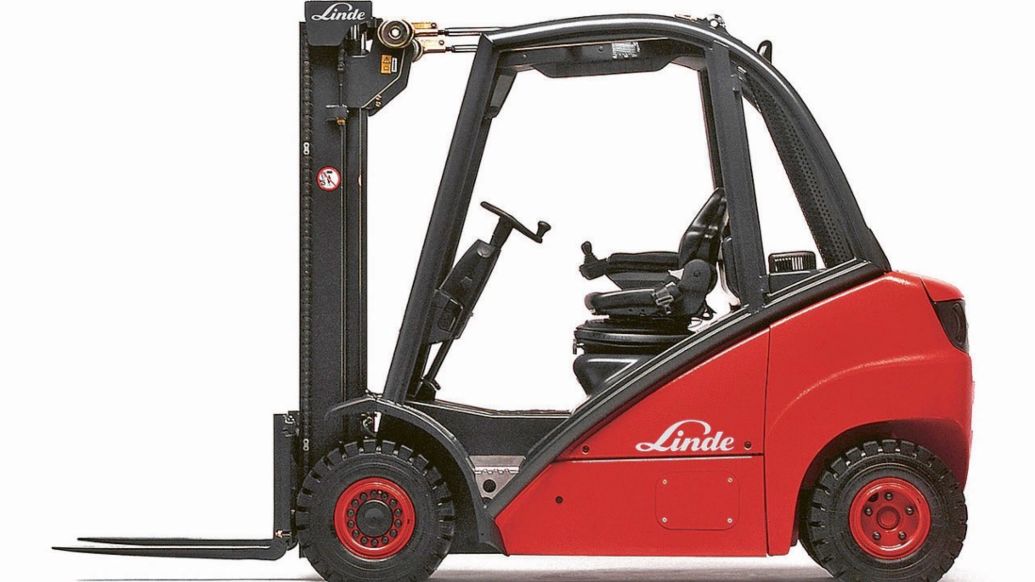
In brief
Until now, Linde Material Handling’s reach trucks have been operated with two or four individual levers. Together with Porsche Engineering, the company has developed a new multifunctional lever that makes all functions accessible with just one hand. This means that the drivers do not have to change hand positions and always have their eyes on the load.
Info
Text first published in the Porsche Engineering Magazine, issue 1/2022.
Author: Jost Burger
Copyright: All images, videos and audio files published in this article are subject to copyright. Reproduction or repetition in whole or in part is not permitted without the written consent of Dr. Ing. h.c. F. Porsche AG is not permitted. Please contact newsroom@porsche.com for further information.
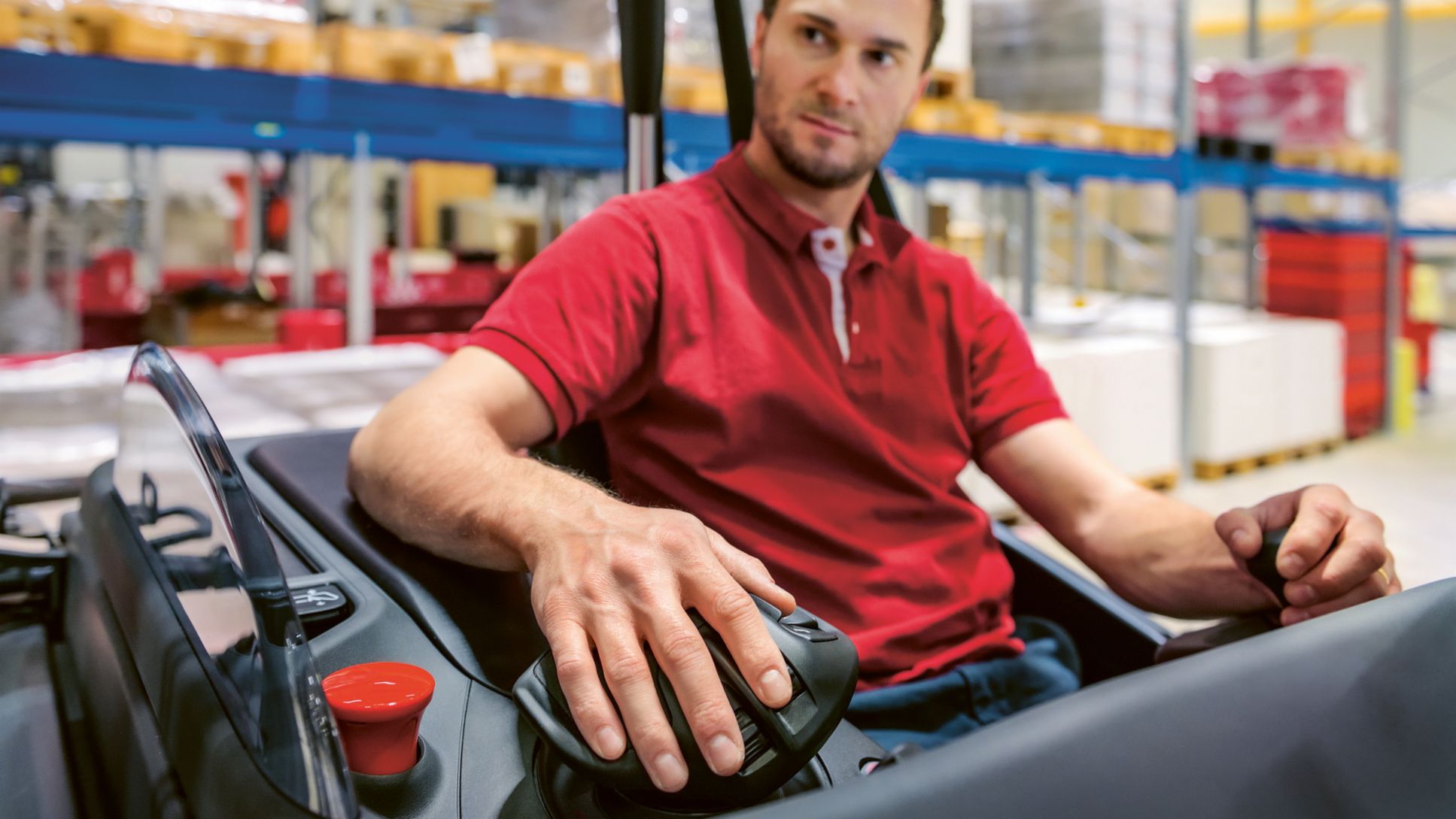
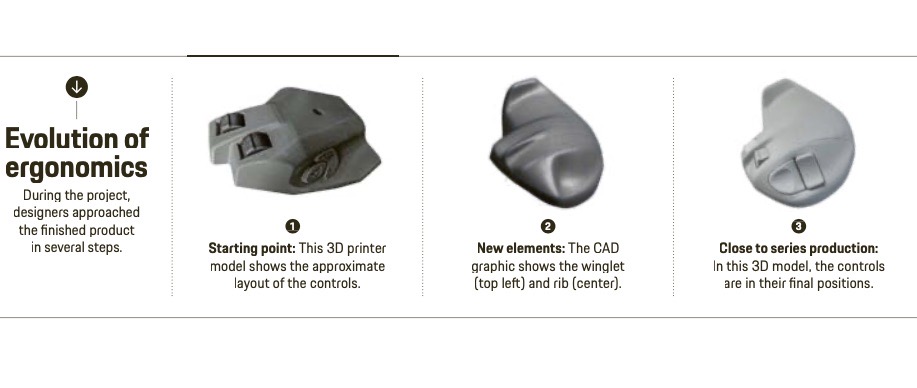


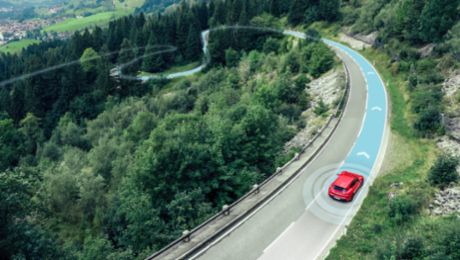
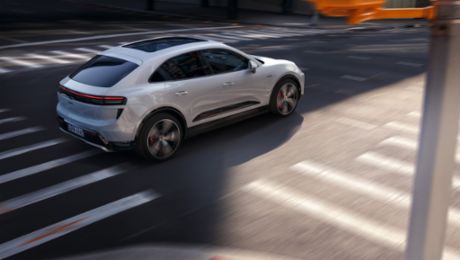
.jpg/jcr:content/S44-NOI_230919_PorscheMagazin_0047_278A5652-Final%20(1).jpg)